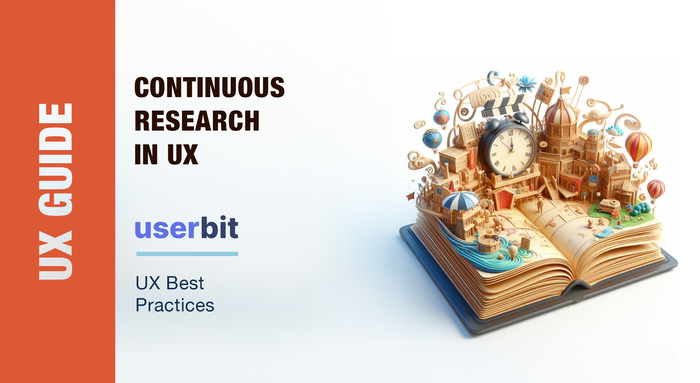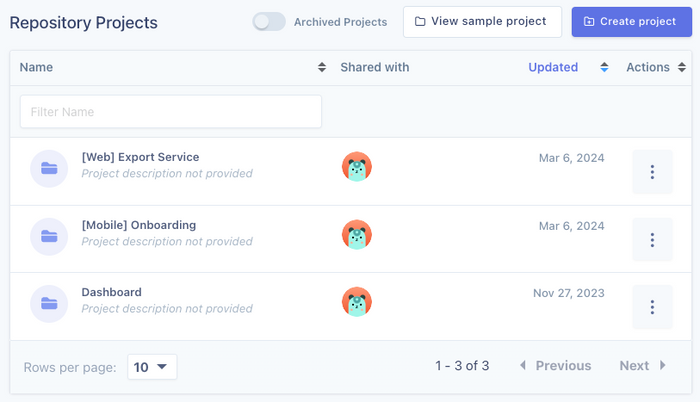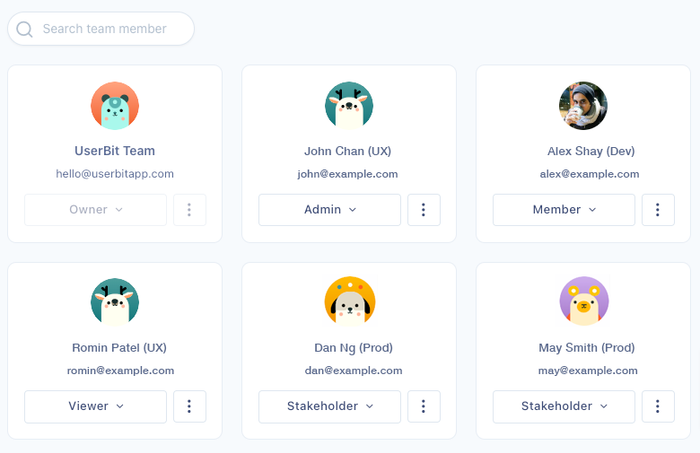
What is Continuous Research in UX?
You know how user research used to be all about those face-to-face interviews? Well, times have changed. We’re now in our continuous research era. 💁♀️
Continuous research is exactly what it sounds like: an ongoing process of gathering insights about your users. Instead of just getting a snapshot of their behavior at one point in time, you're constantly collecting data and refining your understanding.
You can think of it as having a live stream of user insights that informs your design decisions in real-time. So, if you're ready to ditch the one-and-done approach and embrace a more dynamic way of understanding your users, continuous research is where it's at.
What is continuous research?
Continuous research embraces an always-on mindset by employing product research workflows on a continual basis. Instead of waiting for a specific project or initiative to kickstart research activities, teams are encouraged to engage in weekly rituals aimed at gathering insights and connecting with users in real-time.
While the concept of continuous research isn't entirely new, it has recently seen widespread adoption, and for good reason. By breaking free from the constraints of long-term projects and embracing a more iterative approach, teams can stay nimble and responsive to user needs.
What’s the difference between traditional user research vs. continuous research?
Yeah…it’s not always the easiest to grasp the distinctions between traditional and continuous approaches right away. They sound pretty similar, but there are some differences:
Traditional UX research
Traditionally, UX research operates within project-based frameworks. It begins with a defined question, topic, or brief, leading to a structured process of planning, recruitment, data collection, synthesis, insight presentation, and application.
This type of research is typically spearheaded by research specialists, who work in a support capacity to the teams implementing their findings. Projects are often comprehensive and can span entire quarters by focusing on uncovering long-term opportunities for a company.
Continuous UX research
Unlike traditional research, continuous research seeks inspiration for ongoing improvements rather than specific answers or information.
Practical in nature, continuous research emphasizes immediate application of learnings. It operates without the need for distinct projects, relying instead on regularly scheduled initiatives to maintain a weekly rhythm of research activities.
While anyone on the product team can conduct continuous research, those with research skills, such as UX and product designers, often facilitate the process.
Transitioning to continuous UX research
Lucky for us, going from traditional research to continuous UX research really isn't that difficult. It simply requires a shift in mindset. Here are some key considerations to think about:
Move from “project mindset” to “continuous delivery”
You’ll want to break away from the traditional timeboxed project-based approach and adopt an agile, continuous delivery mindset. Research projects should now focus on product areas as opposed to time-frames.
For example, set up cross-functional collaboration projects in a shared workspace between UX designers, product managers, developers, and other stakeholders to ensure that research findings are integrated seamlessly into the development process.
Leverage researchers as internal experts
Encourage researchers to take on a more facilitative role by focusing on increasing research maturity within the organization.
This step involves educating teams and embedding research operations into every product team. It’ll also include establishing standardized processes and tools for managing research activities, participant recruitment, data storage, and analysis.
By streamlining research operations and providing teams with the necessary infrastructure and support, researchers can ensure that research efforts are efficient, consistent, and scalable across the organization.
Embrace continuous delivery
An integral part of continous research is the ability to deliver and update your findings in parallel as well. Continually publishing findings from research ensures that the insights are actionable for cross-functional teams including development sprints.
You can also ensure that product managers and designers take ownership of research outcomes and are actively involved in shaping research priorities and methodologies.
UserBit's Client Portal was built specifically to facilitate continuous delivery. Research teams can not only publish insights to the portal under various ongoing themes, but also keep stakeholders in the loop at all times.
Using the Client portal, cross-functional teams can easily gain a deeper understanding of where the findings are coming from without having to go through the learning curve of a research platform.
How to quickly conduct continuous research
Are you a UX team of one? Or in a rush but want things done ASAP? Here’s how you can get a continuous research set up started right away:
1. Set up weekly rituals
Establish regular time slots for research activities, such as customer interviews or usability testing. Remember that consistency is key to maintaining momentum!
2. Automate where possible
Streamline your research process by automating tedious tasks like
- transcribing interview recordings ,
- tagging qualitative data ,
- creating insights from tagged data ,
- etc.
3. Start small, then iterate
Don't overwhelm yourself with too many research activities at once. Begin with one or two weekly rituals and gradually expand as you become more comfortable.
4. Focus on actionable insights
Aim to gather insights that can be immediately applied to your design decisions. Continuous research works to drive tangible outcomes, not just collect data for the sake of it.
5. Encourage team collaboration
Involve your entire team in the research process to foster a shared understanding of user needs and promote cross-functional collaboration.
6. Stay agile
Be prepared to adapt your research approach based on feedback and changing project requirements. Flexibility is 100% the way to go in a continuous research environment!
Whether you're conducting or managing user interviews, running usability tests, or analyzing qualitative data, UserBit streamlines the research process so it’s easier than ever to collect, organize, and share your findings every week — and more!




